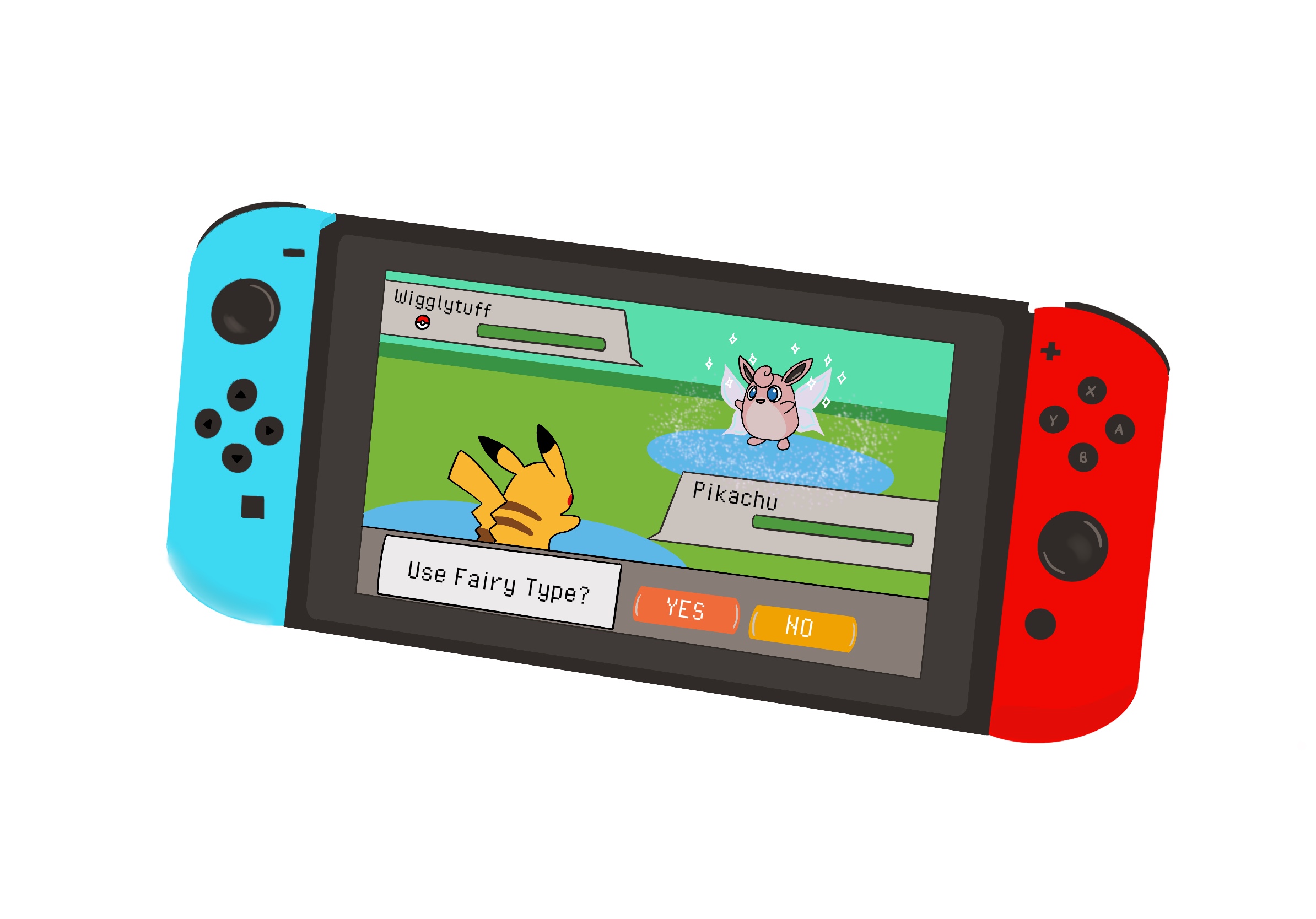
In October 2013, Pokémon introduced the fairy type—the first new Pokémon type since October 2000. In summary, each Pokémon has one or two “types,” and each move has one type. The move’s type determines how effective it will be against the opponent’s type(s). The release of the fairy type was met with a heap of praise, as it reduced the strength of the dragon type. However, the introduction of the fairy type also created an interesting conundrum of how and when to introduce a new type to the ever-flexible Pokémon series of games.
Most types are weak against three to four other types, and strong against a similar number of types. However, in the 2000 through 2013 generations of Pokémon, one type defied this model: The dragon type was only strong against other dragon types and weak against dragon and ice types. Most dragon type Pokémon were very strong, so the lack of weaknesses made it extremely hard to counter an opponent that was using them. However, the developers balanced this out by making dragon types rare and mostly present in the late game when the opponent’s team would be strong enough to defeat them—the developers presented this type as a tough but fair challenge.
The introduction of the fairy type carried a clear goal: to make dragon types less powerful. Developers made the fairy type immune to the dragon type and had fairy super-affect (deal double damage to) dragon types. There are a few other types that are immune to certain types (for example, flying is immune to ground), but none of the immune types super-affect the opposing type.
To round out the fairy type, the developers gave it two more types to be strong against—both logical choices. The drastic change was in the only two types that fairy is weak to: poison and steel types. In 2013, these were regarded as two of the worst types. Both types had many weaknesses and were only strong against weak types. Poison and steel type Pokémon were also relatively rare, which suddenly made finding a counter to fairy types hard.
By only having two rare weaknesses and being strong against the best type in the game, the fairy type was introduced as an oddity. From a player’s perspective, it seemed as if fairy types had been introduced for this one sole purpose and failed to integrate themselves into the complex, pre-established type effectiveness web. In addition, dragon types were still extremely rare—players didn’t get more opportunities to encounter dragon types, even though they weren’t as overpowered as they used to be.
Developers eventually fixed these problems, but it took a few years and a handful of new Pokémon games to do it. In the newer games, more poison and steel type Pokémon and moves have been introduced, and dragon types are present throughout the game instead of just at the very end. The fairy type has also been improved with new moves and many new Pokémon; however, these were gradual solutions—it took the introduction of new Pokémon in 2016 and 2019 to fix the oddity created in 2013.
This begs the question: Should the developers have released the fairy type in 2013, or should they have focused on creating better poison and steel types before releasing fairy? There is, however, a middle ground, where fairy types could have had another weakness and not have been immune to dragon types—instead, dragon moves could be “not-very-effective” (deal half damage). Dragon types would be weaker, yet not completely useless, against fairy types.
A similar transition happened in 1999, when the new Pokémon games added dark and steel types. This introduction was a response to the psychic type’s overpowering presence in the original Pokémon games. This transition fared a little smoother than fairy, yet suffered from the same problem: There weren’t a ton of Pokémon who had the types. Just like fairy type, it took a few years for dark and steel types to become more rounded with moves and Pokémon.
From these examples, it doesn’t seem like the Pokémon development team is thinking in advance. While new types may be great ideas and might open up worlds of possibilities, rushing into releasing them without the proper setup makes the games worse. Even though there were a handful of different fairy type Pokémon introduced in 2013, the limited amount of fairy moves made all of them feel similar. Had the developers left the new type on the back burner, they could have released it later, and with more balance. A sense of natural balance in the world creates immersion, which is at the heart of any succesful game.
"type" - Google News
April 30, 2021 at 03:01PM
https://ift.tt/3xKAXGv
A rushed introduction to fairy types – The Bowdoin Orient - The Bowdoin Orient
"type" - Google News
https://ift.tt/2WhN8Zg
https://ift.tt/2YrjQdq
Bagikan Berita Ini














0 Response to "A rushed introduction to fairy types – The Bowdoin Orient - The Bowdoin Orient"
Post a Comment